#australia-climate
Text
"As solar panels heat up beyond 25°C, their efficiency decreases markedly. Green roofs moderate rooftop temperatures. So we wanted to find out: could green roofs help with the problem of heat reducing the output of solar panels?
Our research compared a “biosolar” green roof — one that combines a solar system with a green roof — and a comparable conventional roof with an equivalent solar system. We measured the impacts on biodiversity and solar output, as well as how the plants coped with having panels installed above them.
The green roof supported much more biodiversity, as one might expect. By reducing average maximum temperatures by about 8°C, it increased solar generation by as much as 107% during peak periods. And while some plant species outperformed others, the vegetation flourished.
These results show we don’t have to choose between a green roof or a solar roof: we can combine the two and reap double the rewards...
How did the panels affect the plants?
In the open areas, we observed minimal changes in the vegetation cover over the study period compared to the initial planted community.
Plant growth was fastest and healthiest in the areas immediately around the solar panels. Several species doubled in coverage. We selected fast-growing vegetation for this section to achieve full coverage of the green roof beds as soon as possible.
The vegetation changed the most in the areas directly below and surrounding the solar panels. The Baby Sun Rose, Aptenia cordifolia, emerged as the dominant plant. It occupied most of the space beneath and surrounding the solar panels, despite having been planted in relatively low densities.
This was surprising: it was not expected the plants would prefer the shaded areas under the panels to the open areas. This shows that shading by solar panels will not prevent the growth of full and healthy roof gardens.

What were the biodiversity impacts?
We used environmental DNA (eDNA) surveys to compare biodiversity on the green roof and conventional roof. Water run-off samples were collected from both roofs and processed on site using portable citizen scientist eDNA sampling equipment to detect traces of DNA shed by the species on the roof.
The eDNA surveys detected a diverse range of species. These included some species (such as algae and fungi) that are not easily detected using other survey methods. The results confirmed the presence of bird species recorded by the cameras but also showed other visiting bird species went undetected by the cameras.
Overall, the green roof supported four times as many species of birds, over seven times as many arthropods such as insects, spiders and millipedes, and twice as many snail and slug species as the conventional roof. There was many times the diversity of microorganisms such as algae and fungi.
Encouragingly, the green roof attracted species unexpected in the city. They included blue-banded bees (Amegilla cingulata) and metallic shield bugs (Scutiphora pedicellata).
How did the green roof alter temperatures?
The green roof reduced surface temperatures by up to 9.63°C for the solar panels and 6.93°C for the roof surfaces. An 8°C reduction in average peak temperature on the green roof would result in substantial heating and cooling energy savings inside the building.
This lowering of temperatures increased the maximum output of the solar panels by 21-107%, depending on the month. Performance modelling indicates an extensive green roof in central Sydney can, on average, produce 4.5% more electricity at any given light level.
These results show we don’t have to choose between a green roof or a solar roof. We can combine them to take advantage of the many benefits of biosolar green roofs.
Biosolar roofs can help get cities to net zero
The next step is to design green roofs and their plantings specifically to enhance biodiversity. Green roofs and other green infrastructure may alter urban wildlife’s activities and could eventually attract non-urban species.
Our green roof also decreased stormwater runoff, removed a range of run-off pollutants and insulated the building from extremes of temperature. A relatively inexpensive system provides all of these services with moderate maintenance and, best of all, zero energy inputs.
Clearly, biosolar green roofs could make major contributions to net-zero cities. And all that’s needed is space that currently has no other use."
-via GoodGoodGood, May 12, 2024
#green#green roof#biosolar#solar power#solar panels#rooftop solar#solarpunk#native plants#australia#sydney australia#biodiversity#conservation#climate change#climate action#climate hope#global warming#temperature#climate adaptation#cooling#good news#hope
2K notes
·
View notes
Photo

Australia's climate equivalents (using the köppen climate classification system)
by u/SeaBoss2
4K notes
·
View notes
Text

#climate crisis#climate criminals#fuck capitalism#capitalism#random facts#fun facts#interesting facts#facts#fact of the day#fact#ausgov#politas#auspol#tasgov#taspol#australia#neoliberal capitalism#fuck neoliberals#anthony albanese#albanese government#anti capitalist#capitalist hell#capitalist dystopia#capitalist bullshit#class war#classwar#global warming#anti monarchy#antimoney#anticapitalist
1K notes
·
View notes
Text
Good News - May 15-21
Like these weekly compilations? Support me on Ko-fi! Also, if you tip me on Ko-fi, at the end of the month I'll send you a link to all of the articles I found but didn't use each week - almost double the content!
1. Translocation of 2,000 rhinos in Africa gets underway in “one of the most audacious conservation efforts of modern times”
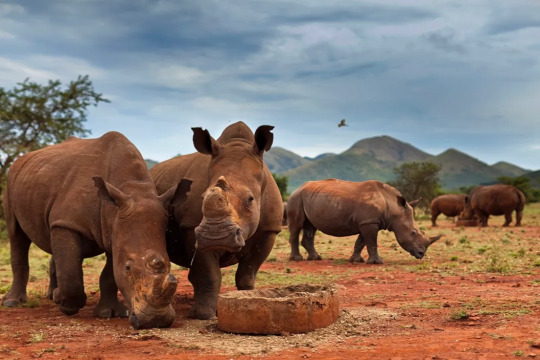
“The 2,000 rhinos - more than are currently found in any single wild location in Africa - represent around 12-15% of the continent’s remaining white rhino population. […] “Rhinos perform an important ecological function in the environment as a large grazing herbivore,” says Dale Wepener[….] “The protection of rhino is far more than just looking after rhino; other species that occur in the protected areas will benefit from the protection,” explains Jooste. “This will lead to an increase in diversity and result in much healthier ecosystems.”
2. Florida Corridor Buffers Effects of Climate Change on Wildlife — And People
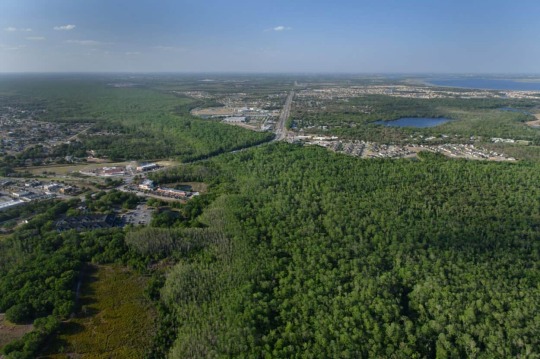
“A massive multi-partner effort that has conserved 10 million acres for wildlife in Florida over past decades will help buffer wildlife—and people—from the effects of climate change, a new report says. […] Protecting these corridors is important for wildlife genetics, demography and connectivity […], conducting prescribed fires in the corridor can reduce the risk of more intense wildfires [… and] they can provide buffers against hurricanes and seasonal thunderstorms.”
3. Global life expectancy to increase by nearly 5 years by 2050 despite geopolitical, metabolic, and environmental threats
“Increases are expected to be largest in countries where life expectancy is lower, contributing to a convergence of increased life expectancy across geographies. The trend is largely driven by public health measures that have prevented and improved survival rates from cardiovascular diseases, COVID-19, and a range of communicable, maternal, neonatal, and nutritional diseases (CMNNs).”
4. Valencia has Spain’s longest urban park

“Jardin del Turia (Turia Garden) is the green spine of the City of Valencia and Spain’s (and possibly Europe’s) longest urban park stretching for a length of 8.5 kilometres [… and] the current administration plans to make Jardin del Turia Europe’s largest city green space by extending it to the sea[….] Almost all Valencia residents (97 per cent) live within 300 metres of an urban green space. […] Jardin del Turia is a true urban oasis that provides exceptional thermal comfort, with a temperature difference of up to three degrees compared to other areas of the city.”
5. This Paint Could Clean Both Itself and the Air
“When an artificial ultraviolet light source shines on [photocatalytic] paint, the nanoparticles react with pollutants to make them break down—theoretically removing them from the nearby air and preventing a discoloring buildup. [… R]esearchers developed a new photocatalytic paint that they claim works using UV rays from ordinary sunlight, making its self-cleaning properties easier to activate. They’ve also shown that they can effectively produce this paint from recycled materials [including fallen leaves].”
6. Planting Seedlings for a Cooler Rockingham
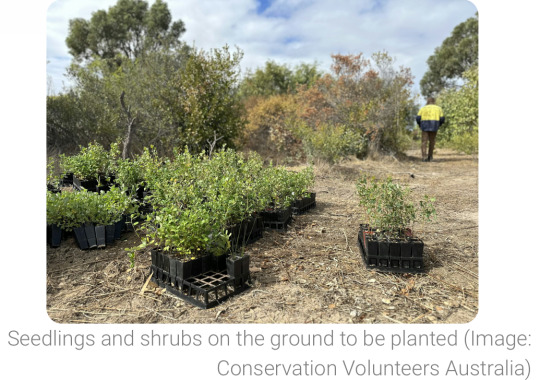
“A dedicated group of volunteers recently planted over a thousand native seedlings in Lewington Reserve [… and] re-established canopy cover to areas of the reserve to create cooling shade for the local community and provide homes for native wildlife. […] Planting lots of trees and shrubs in urban areas can help create shade and cool cities, mitigating the impacts of climate change, contributing to biodiversity conservation and building greener, more resilient communities.”
7. Sydney’s first dedicated affordable housing for trans women designed to deliver ‘positive outcomes’

“Community housing provider and charity Common Equity NSW, […] which is for people on very low to moderate incomes, prides itself on creating inclusive living and promotes the independence and well-being of people and communities […, and] will deliver the first-of-its-kind social housing in a bid to provide a safe place to live for transgender women seeking an affordable home.”
8. Rewilding: How a herd of bison reintroduced to Romania is helping ‘supercharge’ carbon removal
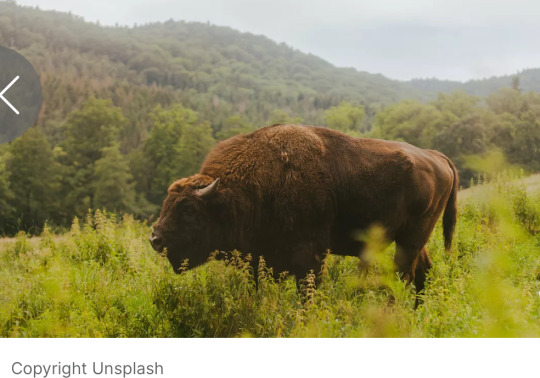
“170 European Bison reintroduced to Romania’s Țarcu mountains could help capture and store the carbon released by up to 84,000 average US petrol cars each year. […] By grazing a 48 square kilometre area of grassland in a wider landscape of 300 kilometres squared, they helped to capture an additional 54,000 tonnes of carbon each year. That is around 10 times the amount that would be captured by the ecosystem without the bison.”
9. World’s biggest grids could be powered by renewables, with little or no storage
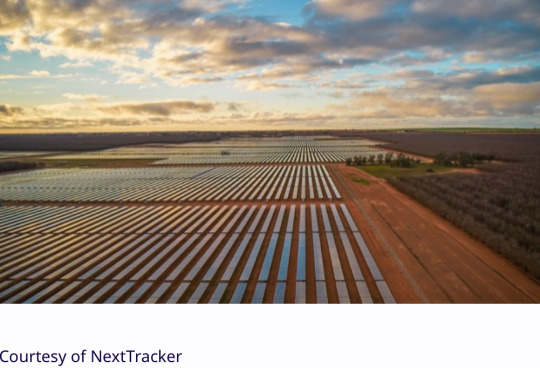
“[…] 100% renewable supply can then match the load by putting surplus electricity into two kinds of distributed storage worth that [an energy expert] says are worth buying anyway – ice-storage air-conditioning and smart bidirectional charging of electric cars, and recover that energy when needed, filling the last gaps with unobtrusively flexible demand.”
10. Supporting the Long-Term Survival of Copper River Salmon and Alaska Native Traditions
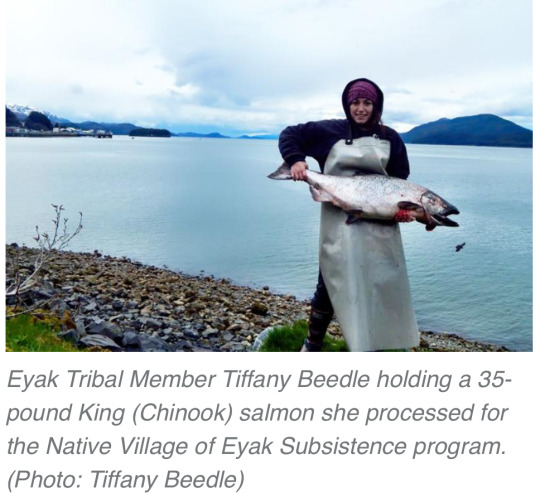
“With $4.3 million in NOAA funds, the Copper River Watershed Project and The Eyak Corporation will remove fish passage barriers, opening more streams for salmon spawning and subsistence fishing. [… As part of this effort, o]ld narrow culverts that constrict water flow will be replaced with “stream simulation” culverts wide enough to fit the full stream, including its banks. They are also deep to allow contractors to place stones and other material inside to mimic a natural stream bottom.”
May 8-14 news here | (all credit for images and written material can be found at the source linked; I don’t claim credit for anything but curating.)
#hopepunk#good news#rhino#white rhino#africa#conservation#rewilding#climate change#florida#wildlife#life expectancy#health#spain#green space#urban parks#recycling#trees#global warming#trans#affordable housing#australia#bison#romania#carbon#carbon capture#renewableenergy#reforestation#salmon#alaska native#nature
383 notes
·
View notes
Text

Just in case you aren’t all aware. This isn’t fucking normal. This doesn’t happen. This is climate change causing extreme weather events to happen more frequently and with more power.
Be aware and stay safe. Do what you can to help!
784 notes
·
View notes
Text




Know your permaculture guilds
#hopecore#hopepunk#solarpunk#peaceful revolution#greenhorizon#anti capitalism#climate change solutions#naturecore#forestcore#lunarpunk#gardening#permaculture#cottagecore#nature aesthetic#growing my beans and potatoes together#from permies.com#some of these are Australia specific I think#just fyi
156 notes
·
View notes
Text
Boycott Banks for Funding Fossil Fuels Song
Original version - Australia
Here is the Singer’s linktree which contains resources for finding better banks .
2K notes
·
View notes
Text
Australia should prepare for “megadroughts” that last more than 20 years and will worsen due to human-induced global heating, new research has found.
Megadroughts are exceptionally severe periods of below average rainfall that last decades. Climate modelling by the Australian National University, published in the journal of Hydrology and Earth System Sciences last week, found droughts spanning more than two decades have occurred in Australia over the past millennia and reoccur every 150 to 1,000 years, depending on the modelling used.
Continue Reading.
155 notes
·
View notes
Text

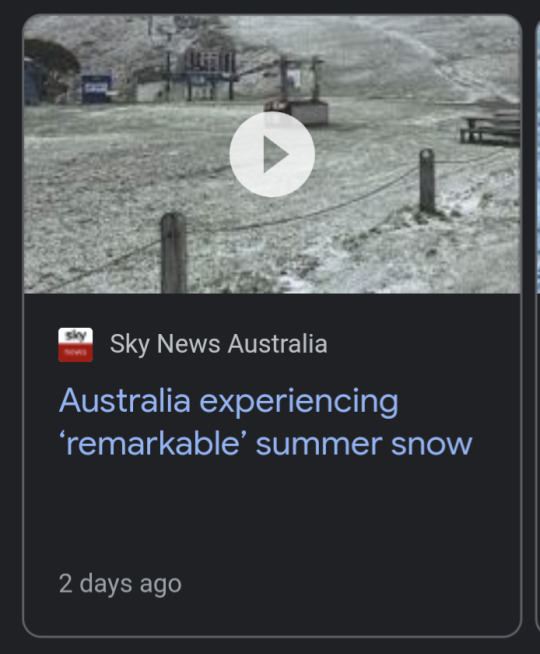
This is climate change. I'm so sick of 'remarkable' and record-breaking weather events happening every single year. And yet Australia remains one of the least sustainable and renewable countries in the world :/
2K notes
·
View notes
Link
“This is a monumental win for forests, for wildlife, for climate, and for the hard-working people who have spent countless hours surveying for endangered species, preparing evidence for court cases, lobbying, and campaigning. Some have been fighting for this for over three decades.”
(Chris Schuringa, Victorian Forest Alliance)
#victoria#victorian politics#logging and land-clearing#environment#australia news#good news#hope#climate change#global warming#ecoanxiety#climate grief#environmental despair#environmental grief#forest conservation#biodiversity
656 notes
·
View notes
Text
(lot of big frog wins)
For the first time in five years, northern corroboree frogs have been spotted in Namadgi National Park by ACT government ecologists.
The species is listed as critically endangered and the government has been attempting to restore their population in the park for more than a decade.
Ecologists have been releasing frogs and eggs into the park as part of a breeding program, but they had not been spotted in the wild since 2019.
This year, 16 male frogs were identified at the Ginini Flats Wetlands site and a further 21 frogs were counted at a lower elevation site in the park. "Having not seen these frogs in the wild since 2019, we were beginning to think all hope was lost, and that the species was close to extinction," Environment Minister Rebecca Vassarotti said.
She told ABC Radio Canberra the frogs were under pressure due to many issues including climate change, habitat loss and the invasive chytrid fungus.
That deadly fungus affects the frogs' skin and stops them from being able to take in water and important salts.
Ms Vassarotti said ecologists had been experimenting with the breeding program and releasing frogs in different areas to see if they could make a difference.
"We've been ... releasing eggs in some other areas in Namadgi, where they hadn't previously been seen," she explained.
"These were at slightly lower elevations. And the reason we were doing that is that they were elevations where there wasn't such an impact of this awful fungus."Ms Vassarotti said this was an "exciting" development but acknowledged there was more work to be done through the breeding program.
"Australia is the extinction capital of the world," Ms Vassarotti said in a statement.
"Way too often, climate change and human impact on the environment has resulted in us losing unique species permanently as they become extinct.
"I've been heartbroken to have to continue to list species as close to extinction.
"The identification of new northern corroboree frogs across a range of sites restores my confidence that we can save this incredible frog that is so unique to our region."
#good news#frogs#environmentalism#science#environment#nature#animals#australia#endangered species#conservation#climate change#climate crisis#parks
70 notes
·
View notes
Text
"The world’s coral reefs are close to 25% larger than we thought. By using satellite images, machine learning and on-ground knowledge from a global network of people living and working on coral reefs, we found an extra 64,000 square kilometers of coral reefs — an area the size of Ireland.
That brings the total size of the planet’s shallow reefs (meaning 0-20 meters deep) to 348,000 square kilometers — the size of Germany. This figure represents whole coral reef ecosystems, ranging from sandy-bottomed lagoons with a little coral, to coral rubble flats, to living walls of coral.
Within this 348,000 km² of coral is 80,000 km² where there’s a hard bottom — rocks rather than sand. These areas are likely to be home to significant amounts of coral — the places snorkelers and scuba divers most like to visit.
You might wonder why we’re finding this out now. Didn’t we already know where the world’s reefs are?
Previously, we’ve had to pull data from many different sources, which made it harder to pin down the extent of coral reefs with certainty. But now we have high resolution satellite data covering the entire world — and are able to see reefs as deep as 30 meters down.
We coupled this with direct observations and records of coral reefs from over 400 individuals and organizations in countries with coral reefs from all regions, such as the Maldives, Cuba and Australia.
To produce the maps, we used machine learning techniques to chew through 100 trillion pixels from the Sentinel-2 and Planet Dove CubeSat satellites to make accurate predictions about where coral is — and is not. The team worked with almost 500 researchers and collaborators to make the maps.
The result: the world’s first comprehensive map of coral reefs extent, and their composition, produced through the Allen Coral Atlas.
The maps are already proving their worth. Reef management agencies around the world are using them to plan and assess conservation work and threats to reefs...
In good news, these maps are already leading to real world change. We’ve already seen new efforts to conserve coral reefs in Indonesia, several Pacific island nations, Panama, Belize, Kenya and Australia, among others."
-via GoodGoodGood, May 2, 2024
--
Note: You can see the maps yourself by going here!
#coral#coral reef#sea creatures#marine life#underwater#coral reefs#conservation#conservation news#climate change#hope#hope posting#hopepunk#environment#environmental science#environmental news#good news#climate action#climate hope#maldives#cuba#australia#machine learning#ai#this is the kind of shit ai should be used for!!!#indonesia#panama#belize#kenya#it's coral week here at reasonsforhope and it's not even on purpose!
288 notes
·
View notes
Text
The Southern Hemisphere, where it’s winter, has been really hot too
Brazil, Argentina, South Africa, and Australia had heat waves in the past few months. Now spring begins.
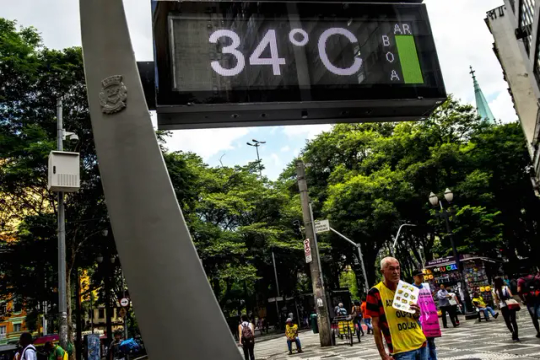
It’s been a hot, brutal, record-breaking summer across much of the world, and it’s not quite ready to let go as late-season heat waves bake parts of the United States, the United Kingdom, North Africa, and the Middle East.
The long goodbye is a fitting cap to a season of deadly heat that contributed to severe drought in some areas and torrential rainfall in others. High temperatures also set the stage for wildfires in Greece and Turkey, Canada, Hawaii, and Louisiana.
But at least people north of the equator can look forward to some relief as autumn and winter set in. The 850 million people in the Southern Hemisphere, on the other hand, are emerging from some of their hottest winter temperatures on record and bracing for even more heat as the warmer seasons begin.
In fact, the weather was pretty much like summer in June, July, and August across parts of South America, Africa, and Australia. Peruvians went to the beach last month as temperatures reached 82 degrees Fahrenheit. Similarly balmy weather engulfed Paraguay and Chile. Buenos Aires, Argentina, reached 86°F, the hottest August temperature in at least 117 years. The heat was downright dangerous in Brazil as thermometers ticked above 100°F. Australia’s Bureau of Meteorology confirmed this month that Australia experienced its hottest winter since record keeping began more than a century ago. Even down near the South Pole, warmer air and water have led to the lowest sea ice extent on record around Antarctica.
“Some of these set new records by a large margin, also known as ‘record shattering’ extremes,” explained Michael Grose, a senior research scientist at CSIRO, Australia’s government science agency, in an email.
Continue reading.
#brazil#politics#environmentalism#climate change#australia#argentina#south africa#brazilian politics#australian politics#argentine politics#south african politics#mod nise da silveira#image description in alt
153 notes
·
View notes
Text

That's not "irony." That's exactly the kind of shit that protesters are warning us about.
#ClimateChange #NYC #NYCFlooding
#climate change#climate crisis#climate emergency#climate action#climate and environment#ausgov#politas#auspol#tasgov#taspol#australia#fuck neoliberals#neoliberal capitalism#anthony albanese#albanese government#global warming#environmentalism#environment#enviroment art#enviromental#environmetalists#co2 emissions#co2#carbon#carbon dioxide#methane#weather#class war#anti capitalism#antinazi
510 notes
·
View notes
Text
Stay safe, folks.
55 notes
·
View notes
Text
Good News From Israel
In the 3rd Mar 24 edition of Israel’s good news, the highlights include:
An IDF veteran drove over 130 miles to take charge of Oct 7 rescue operations.
Israeli sunshine can help grow large families.
A mother of 3 secretly oversees the development of David’s Sling.
An Israeli pesticide makes weeds infertile.
A war cannot stop Israelis from starting new companies.
More sports gold medals for Israelis.
A brave rescued Israeli female hostage has returned to army service.
Read More: Good News From Israel

Not even a war can stop Israel building on its 75-years of success in rebuilding a Jewish State.
Israel continues to build up its basket of subsidized medical treatments, create new remedies for global diseases, discover the secret for building bigger families, and construct medical centers for rehabilitating the injured.
The latest news includes the Israeli woman who oversees the building of Israel's missile defense system; an Israeli app that rebuilds broken speech into coherent conversation; and 30 Israeli NGOs rebuilding lives in Africa. Israeli startups are restoring the environment, while building efficient EV batteries, hydrogen-powered flying cars, and creating sustainable aviation fuel.
Meanwhile, many Jewish citizens of Europe and the US are realizing that now it is the time to build a new life in Israel.
The photo (TY Sharon) is of Jerusalem's Hurva and the Tiferet synagogues, rebuilt and being rebuilt, after being blown up by the Jordanian army in 1948.
#AI#Australia#Christians#climate change#displaced#EV batteries#fertility#Gaza#good news#Hamas#hostages#IDF#Israel#Jerusalem#Jewish#medication#migraine#pesticides#startups#survivors
24 notes
·
View notes